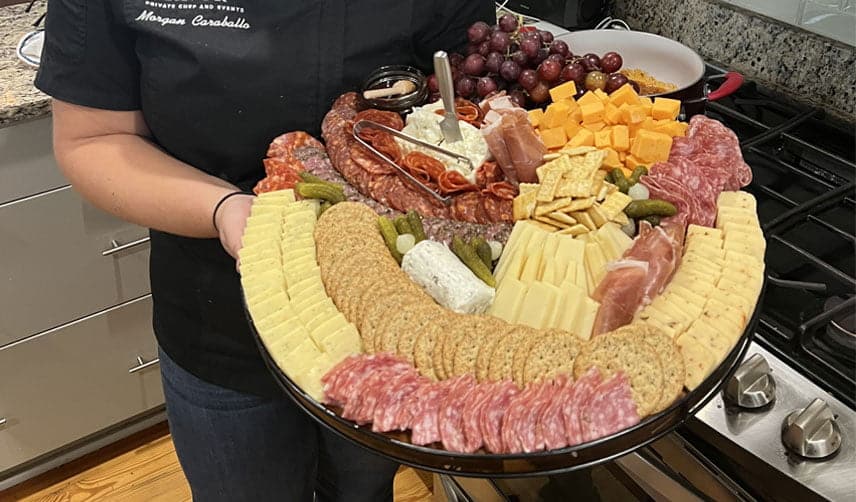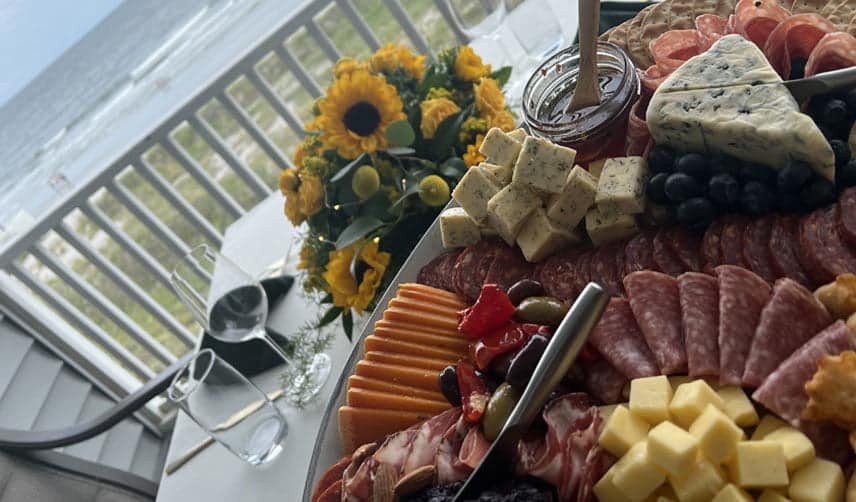Although charcuterie boards have been around for ages, they are gaining in popularity as a way to feed the masses, delight the senses, and appeal to adventurous souls. The key to a charcuterie board is in the cheeses that you select, and if you so choose, the meat varieties and other condiments that you add. When it comes to designing a delectable board, it is all in the variety and combination of textures and flavors. You want a good mix of salty, sweet, spicy, savory, and even some crunch to top it all off.
The way that I approach the board is by first identifying the musts and then breaking them down into sections.
It’s All About the Cheese
You always want to pair hard cheeses with soft and spreadable options like goat cheese or Brie. Next, choose a spread, jelly, or jam that will combine all the different tastes. Then it’s time to find the salty; prosciutto and soppressata are excellent, topped off with something crunchy like almonds for a whole festival of ingredients at once. Around the board, you want to also have fresh colors and fruits like blueberries or strawberries, and finally, either a baguette fresh from the oven or crackers to spread everything on.
What Type of Board Should You Use?
In practical terms, the type of board that you use will limit how much space you have or could give you too much room to cover. I try to use boards in varying sizes and shapes to add a more whimsical feel. Since architecture and history are the signatures of Charleston’s culture, I find that using vintage boards with a bit of history tends to spark conversation. I also like to have enough room to combine various dishes and small white plates to break up the monotony and to keep things like olives, preserves, and jams separate.

The Third Ingredient – Wine
A charcuterie board is typically paired with a fine wine to balance the flavors. I like to use colorful glasses to add to the mystique of my boards. Also, using a carafe with homemade sangria is an excellent way to lighten the atmosphere. If it is a day party or one that is best suited for skipping wine, then fruit juice or sparkling water are excellent substitutes to clear the palate before going in for more.
Be Mindful of the Season
The types of charcuterie boards that I design during the fall and winter differ from those that I would set up during the summer. When temperatures are humid and steamy, I try to stick with light cheeses and preserves mixed in with whatever fruit is at the peak of ripeness. For the winter, I tend to opt more heavily for meats and robust tastes with roasted vegetables or other things that we typically think of during the cold months.
The Real Key Behind Designing a Charcuterie Board
The real secret behind your charcuterie board creation is trying new things. There is nothing more eye-opening than putting tastes together that somehow create magic, especially when you wouldn’t think they belong on the same plate. Try to pair those things with a salty, sweet combo with those with a savory, simple finish, and always make sure that you have enough for everyone – especially when it comes to wine!
At Savor, we specialize in making your occasions moments to remember – or remembering a moment that has no special occasion at all. Contact us to order your fall, holiday, or spring-inspired charcuterie board today. What we can guarantee is that you will find a hidden and wonderful taste surprise around every corner of your board!

